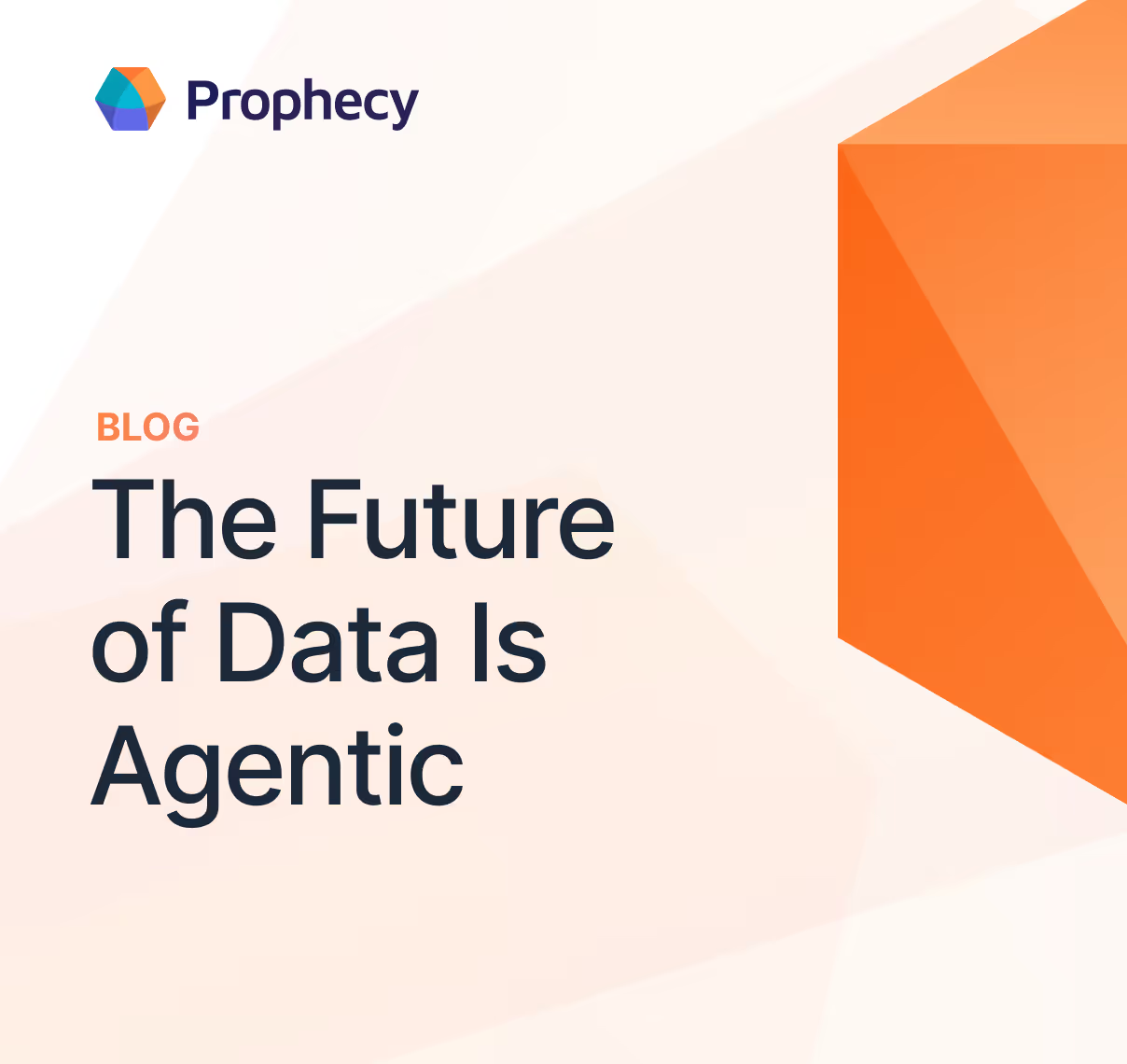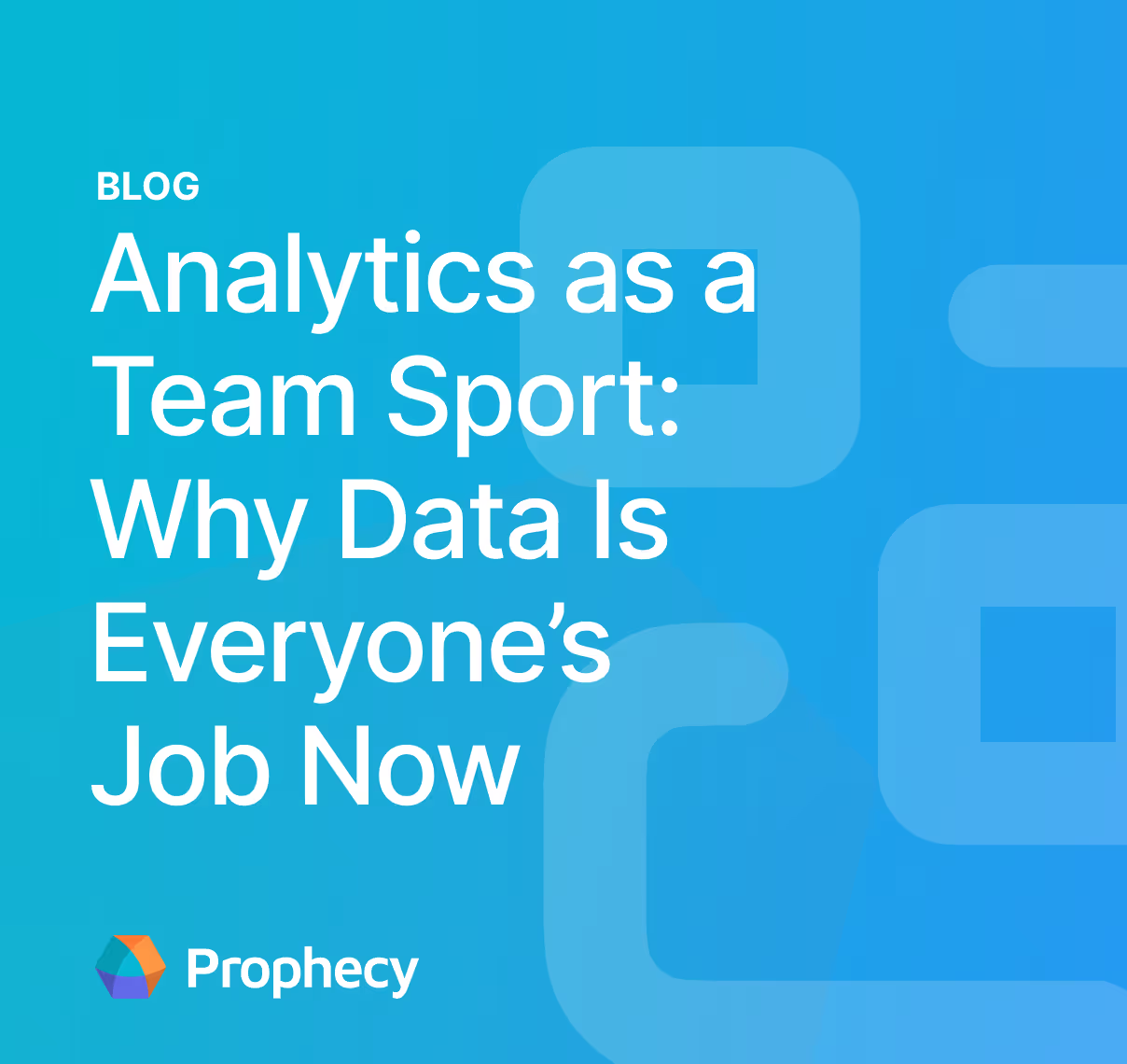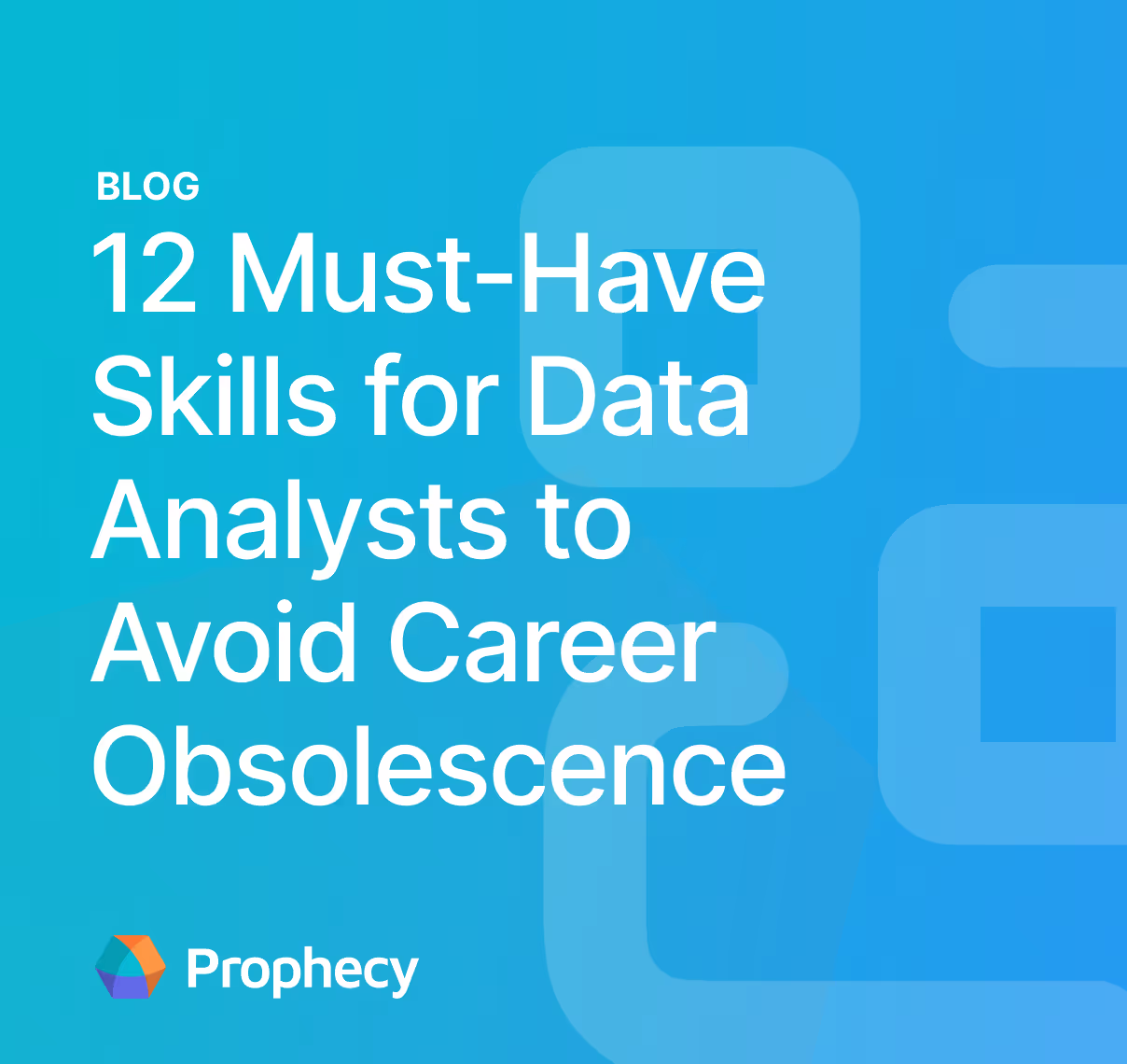The AI Data Prep & Analysis Opportunity
The opportunity is to rethink how analysis happens. Not a toy that generates code for a demo, but an operating model and platform that shrinks the path from intent to impact.
For a couple of years now, AI has been pitched as the cure for slow, brittle analytics. It would automate the grunt work, simplify complexity, and put answers in everyone’s hands. The promise is real, but the results have been uneven.
The opportunity is to rethink how analysis happens. Not a toy that generates code for a demo, but an operating model and platform that shrinks the path from intent to impact.
What “AI Data Prep and Analysis” really means
AI data analysis should give practitioners control. It collapses the multi‑persona, multi‑tool gauntlet between a business question and a production dataset. Analysts start from raw data, express intent, and reach working pipelines in minutes (not months), without queuing behind other roles. True self‑service isn’t a canvas that stops at design; it includes validation and deployment so that what’s built actually runs, reliably, every day.
This is the standard we hold ourselves to at Prophecy.
The operating model: Generate → Refine → Deploy
In practice, teams alternate between two patterns:
- Forward (transformative) chaining: Build value from raw data—join, enrich, derive—to answer new questions.
- Backward (harmonizing) chaining: Start from a canonical model or downstream requirement and map diverse sources into a consistent shape.
A serious platform supports both, so exploration and standardization reinforce each other rather than compete.
Modern AI makes it possible to move fast and ship safely—if you structure the work.
- Generate: Capture intent (natural language, specs, examples) and have AI assemble a first‑pass pipeline that runs on your data cloud. Momentum matters; teams need something concrete in minutes that they can evaluate and evolve.
- Refine: Iterate to correctness. This is where real work happens—logic, edge cases, tests, performance, and documentation. Visual editing and AI assistance accelerate the loop, with code always available when needed. The target is not “mostly right”; it’s production‑right.
- Deploy: Promote with confidence. Version in Git, ship through CI/CD, enforce access and quality gates, observe behavior in production, and close the loop with usage and cost signals so the next refinement is faster. In analytics, a 70% solution is effectively 0%—if it can’t be trusted in production, it doesn’t count.
This model is deliberate. It avoids “AI-to-blob-of-code” dead ends and replaces them with a flow that gets to 100% correct, governed outcomes on enterprise platforms.
Why the platform matters
An operating model is only as good as the system that implements it. Prophecy was built for this era:
- AI → Visual → Code, in sync: Requirements, visual pipelines, and production code stay coherent. Edit any one, and the others reflect the change. This keeps analysts, engineers, and platform teams aligned without handoffs.
- Multimodal collaboration: Analysts work visually with AI; engineers drop to SQL or PySpark when needed; platform owners get governance and repeatability. Everyone sees the same artifact, not separate copies.
- Native to your data cloud: Run where data lives—Databricks, Snowflake, BigQuery—no scale constraints and no lock‑in.
- Enterprise guardrails by default: Version control, lineage, access control, tests, data contracts, observability, and cost awareness are first‑class, not afterthoughts.
What changes for leaders
- Cycle time collapses: Lead time from intent to a first production run drops from weeks to hours. Backlogs shrink because analysts no longer queue for basic transformations.
- Quality and trust rise: Standardized components and quality gates mean fewer incidents and faster recovery. “It runs once” gives way to “it runs as often as we need it to.”
- Throughput compounds: Individual productivity jumps when agents and visual editing remove undifferentiated heavy lifting. Group productivity compounds when engineers harden and promote the same artifacts analysts create.
- Risk declines: Regulatory changes and audit asks stop triggering costly, error‑prone handoffs. Teams respond early with governed pipelines instead of after‑the‑fact patches.
It’s not just about faster insights: A global bank struggled with consistent regulatory compliance, to the tune of tens of millions of dollars in penalties. Legacy systems and complicated handoffs meant that changes in data pipelines inadvertently led to unresolved errors in reports. With Prophecy, analysts can build pipelines, talk to them with agentic AI capabilities, and ensure they are compliant, way before the regulatory compliance team deadlines.
A pragmatic playbook
- Start with one high‑value domain (financial close KPIs, product telemetry, patient access, etc.). Capture intent; generate a baseline pipeline the same day.
- Instrument trust early: data contracts, tests, lineage, and SLOs for freshness/accuracy. Make the acceptance criteria explicit.
- Package reusable logic: publish components/templates for joins, validations, harmonization, and aggregations.
- Create a governed contribution path: let analysts extend pipelines safely; require green tests and approvals to promote.
- Automate promotion: CI/CD moves pipelines from dev → test → prod with the same rigor as software.
- Measure outcomes, not artifacts: track lead time to a trusted dataset, change‑failure rate/MTTR, adoption across roles, and cost per useful dataset.
Where this is going
Agents will keep getting better at assembling and revising pipelines from intent, schema, and examples. The next unlock is richer refinement—learning from runtime signals, tests, and feedback to propose safer upgrades automatically. Deployment will become increasingly hands-off as governance and quality gates tighten. Through it all, experts stay in control while AI compresses the path.
We’re optimistic because we’ve stopped trying to skip to the end. The opportunity isn’t “AI that writes everything for you.” It’s an operating model and a platform that gets you from idea to impact—quickly, repeatably, and at enterprise scale.
Generate what you mean. Refine it until it’s right. Deploy it so it lasts.
Edan Kabatchnik is SVP of Products at Prophecy. Vikas Marwaha is Co‑founder and COO of Prophecy.
Ready to give Prophecy a try?
You can create a free account and get full access to all features for 21 days. No credit card needed. Want more of a guided experience? Request a demo and we’ll walk you through how Prophecy can empower your entire data team with low-code ETL today.
Ready to see Prophecy in action?
Request a demo and we’ll walk you through how Prophecy’s AI-powered visual data pipelines and high-quality open source code empowers everyone to speed data transformation
Get started with the Low-code Data Transformation Platform
Meet with us at Gartner Data & Analytics Summit in Orlando March 11-13th. Schedule a live 1:1 demo at booth #600 with our team of low-code experts. Request a demo here.
Related content
A generative AI platform for private enterprise data
Introducing Prophecy Generative AI Platform and Data Copilot
Ready to start a free trial?
Lastest posts

The Future of Data Is Agentic: Key Insights from Our CDO Magazine Webinar

Analytics as a Team Sport: Why Data Is Everyone’s Job Now


